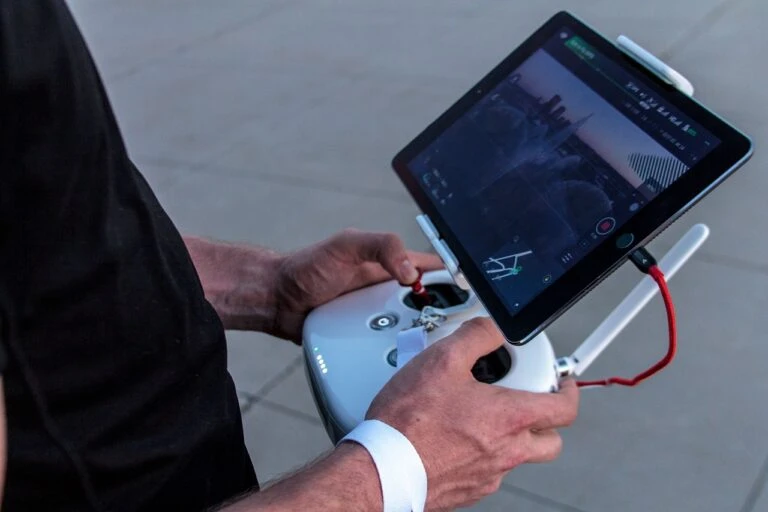2023 has shown us a world of technological advancement that science fiction writers of the past could barely fathom. There is general uneasiness in the face of rapid AI development, robots used in every conceivable capacity, and facial recognition software that can identify an individual walking down a bustling street. We hope that these tools will be used responsibly for the betterment of humankind. Still, the user’s intention is the only apparent difference between a tool and a weapon. When drones became accessible to the public, our fascination with this device overshadowed any notion of their destructive capabilities. With drones being used in conflicts around the globe to disrupt infrastructure and destroy, will we be prepared when the day of the drones descends upon our homeland?
September 14, 2019, saw the implementation of UAS strikes against Saudi Arabian oil processing facilities at Abqaiq and Khurais. The Yemen-based Houthi movement claimed responsibility for the attack in which drones were used with cruise missiles to destroy refineries. It shut oil production down by 50%. In this instance, traditional missile defense systems failed to detect the UAS threats due to their ability to fly at altitudes below radar capability. On September 10, 2023, Russia unleashed over 30 Iranian-made drones on Kyiv. Despite the Ukrainian air force and military intercepting a majority, infrastructure was damaged, and eight houses were destroyed, resulting in casualties.
UAVs have become a main staple in guerrilla combat techniques and a cheap, cost-effective replacement for traditional missiles. The hobbyist models of UASs are easily modified to carry a payload, such as the Russian Geran-2 “kamikaze” model, designed to explode on impact. Russian models such as the Lancet drone cost around $35,000(USD) to manufacture. At this cost point, military strategists can utilize “swarm” techniques in which UASs can converge on a target from multiple directions, confusing and rendering traditional radar systems ineffective. Additionally, the disparity between the cost of producing UAS and the cost of the current missile defense systems creates an unstable financial aspect of the conflict.
Outside of military operations, drones have been used to make foreign nations’ infrastructure grind to a halt without the need for explosives. Between March 2022 and March 2023, Dublin Airport experienced multiple drone incidents, resulting in the disruption of travel and the loss of millions. On Wednesday 19, December 2018, London’s Gatwick Airport was rendered inoperable due to the sighting of two drones. Panic and hysteria ensued within the airport as passengers and security personnel scrambled to understand whether they were facing a potential terrorist attack. Further investigations showed that these drone maneuvers intentionally halted air traffic leading to the Christmas holiday. Without causing physical damage, the mere presence of UASs was enough to terminate all travel through fear. In both cases, British and Irish authorities have installed CUAS equipment capable of detection and mitigation following changes to legislation. John Halinski, the retired Deputy Administrator for TSA, said concerning UAS legislation, “Multiple times I have been asked by members of Congress why we can’t predict and mitigate the next threat. If we ignore this drone threat, we will be asking the same question over again.” Suppose we have learned from the terrorist attacks on 9/11. In that case, it is imperative to avoid potential threats before American lives are lost. So how do we accomplish securing our borders from rapidly developing technology? It all begins with legislation and our ability to respond in a timely manner.
The Current state of CUAS legislation is trapped within a quagmire of state, federal, and criminal components. In the FAA Reauthorization Act of 2018, Congress codified the term “unmanned aircraft” as “an aircraft that is operated without the possibility of direct human intervention from within or on the aircraft. When the legislation concerning CUAS was drafted, its designers were incapable of comprehending the technology being utilized as a modified weapon. The Electronic Communications Privacy Act of 1986, the Pen/Trap statute, and the Wire Tap Act were all created to ensure the protection of citizens’ rights in the face of rapidly evolving technology. However, in all three cases, it is mandatory to acquire a court order to begin the process of drone mitigation during an emergency. While protecting individuals’ rights to privacy, the idea that a government agency can be rendered incapable of acting due to the lengthy process of acquiring a court order puts American lives in jeopardy. To mitigate these issues, we must make amendments to the current legislation concerning CUAS, create a clear protocol for response time, and finally grant the proper authority to the first responding state and government organizations. In the event of a national emergency, a singular delay in response time can be the difference between the loss of American lives. Further information on the current legislation is provided below.
As tensions continue to escalate around the world, we are in desperate need of standardized response plans on a state and federal level. After establishing clear guidelines for mitigation, routine exercises in response around airports and critical infrastructure need to be utilized to bolster our security culture. You would only send a soldier on a mission with the proper tools and authority to accomplish the job. Without adjusting our defensive strategies and legislation to the threat of UAS warfare, we face our enemies unarmed, without the power to act. The day of the drone is upon us, and it’s our responsibility to be prepared and move quickly to clarify roles and responsibilities to mitigate the growing threat.
Source: https://www.hstoday.us/featured/day-of-the-drones/

